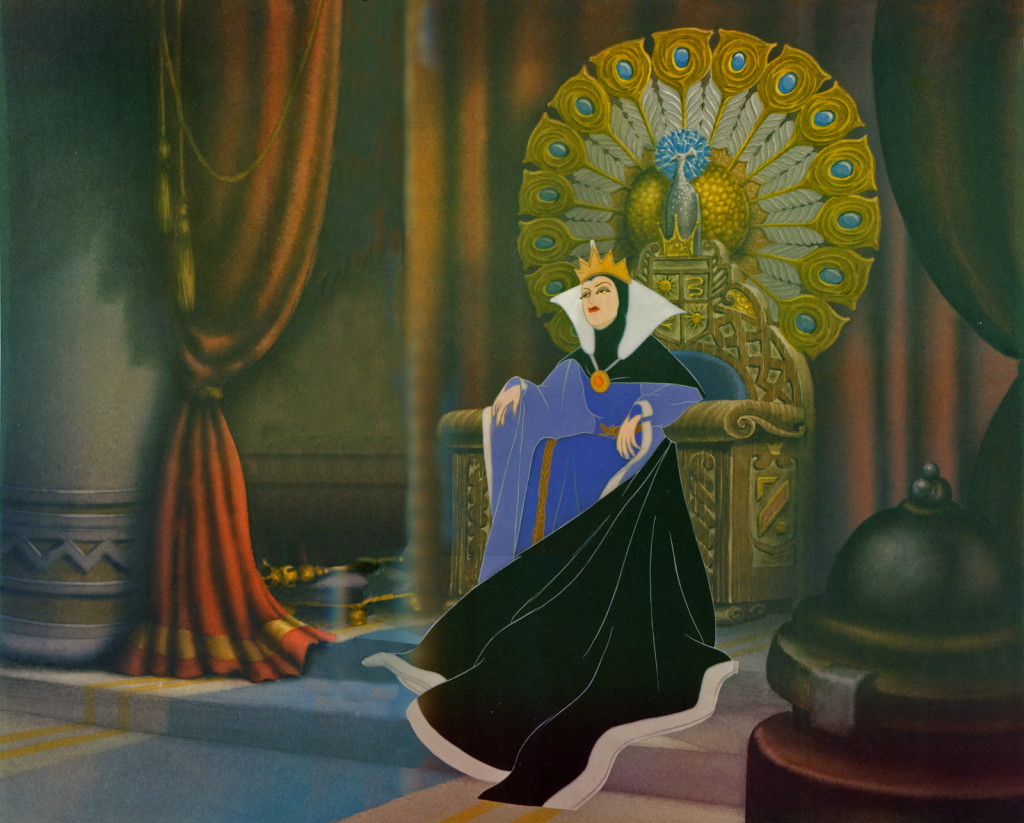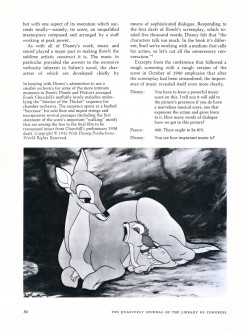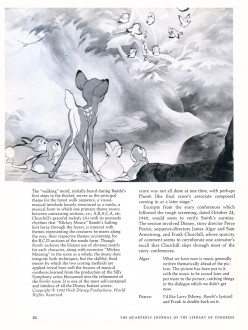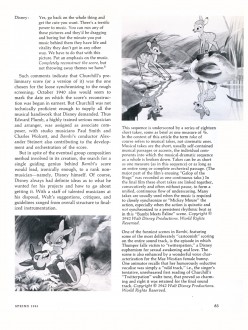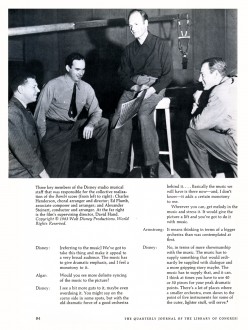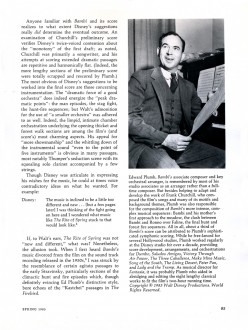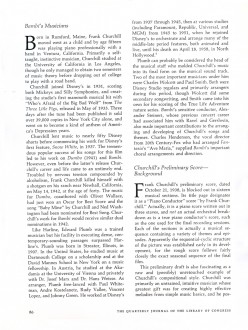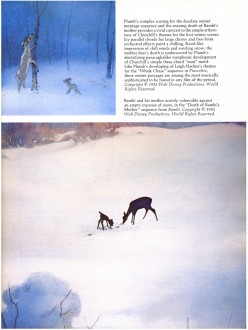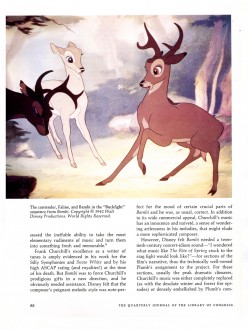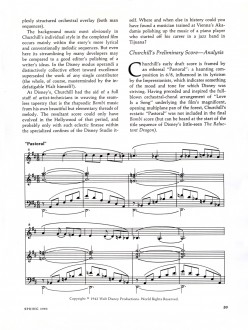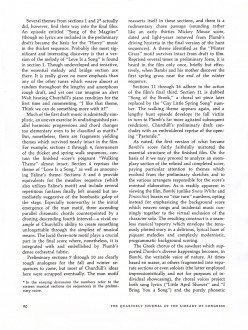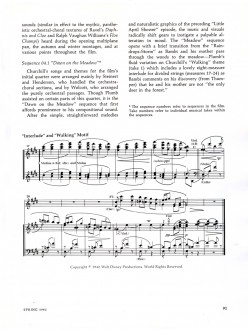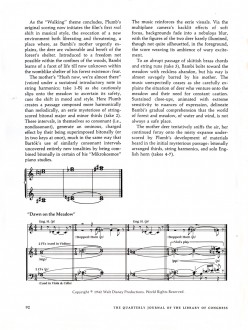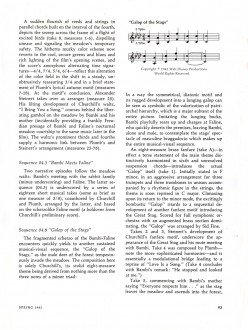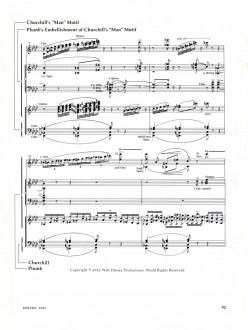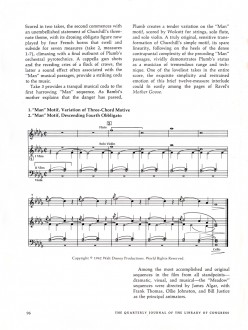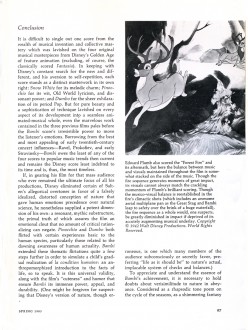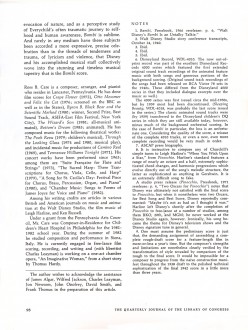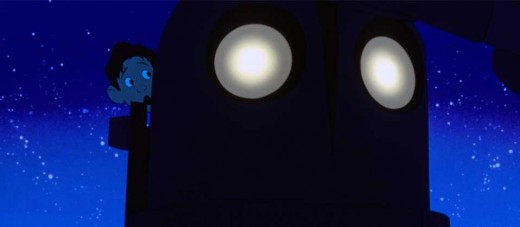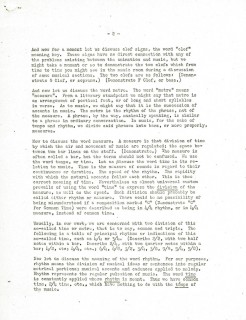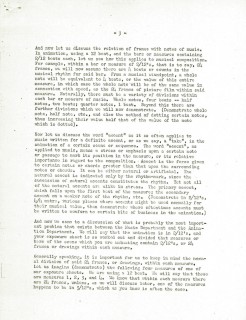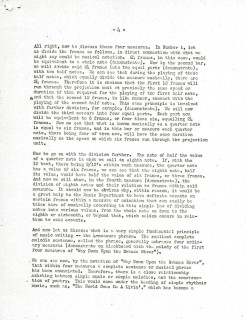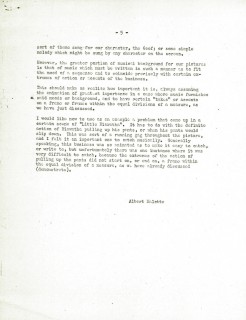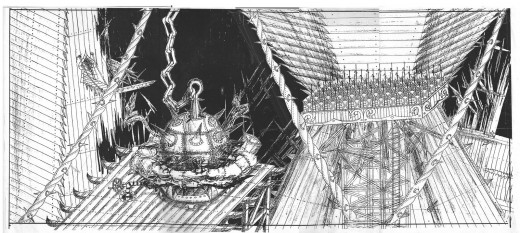Category ArchiveMusic
Action Analysis &Animation &Disney &Music 11 Sep 2013 02:24 am
Noble Touches
When Maurice Noble first started in animation he went, of course, to Mecca, The Disney Studios, where he made a name for himself. He was a Bg painter there. Two of his more noted pieces included the seat for the Queen. Included in the designs was the signs of the Zodiac. This, of course, was a well know feature for the signs of the Dark Forces. Well known author, John Gardner, himself a specialist in medieval history and Art, included 12 chapters in his novel, Grendel, a retelling of the Beowulf story. It’s a classic edition of the story as told by the monster, Grendel, himself.
Two of the illustrations of the Queen’s chair are pictured below:
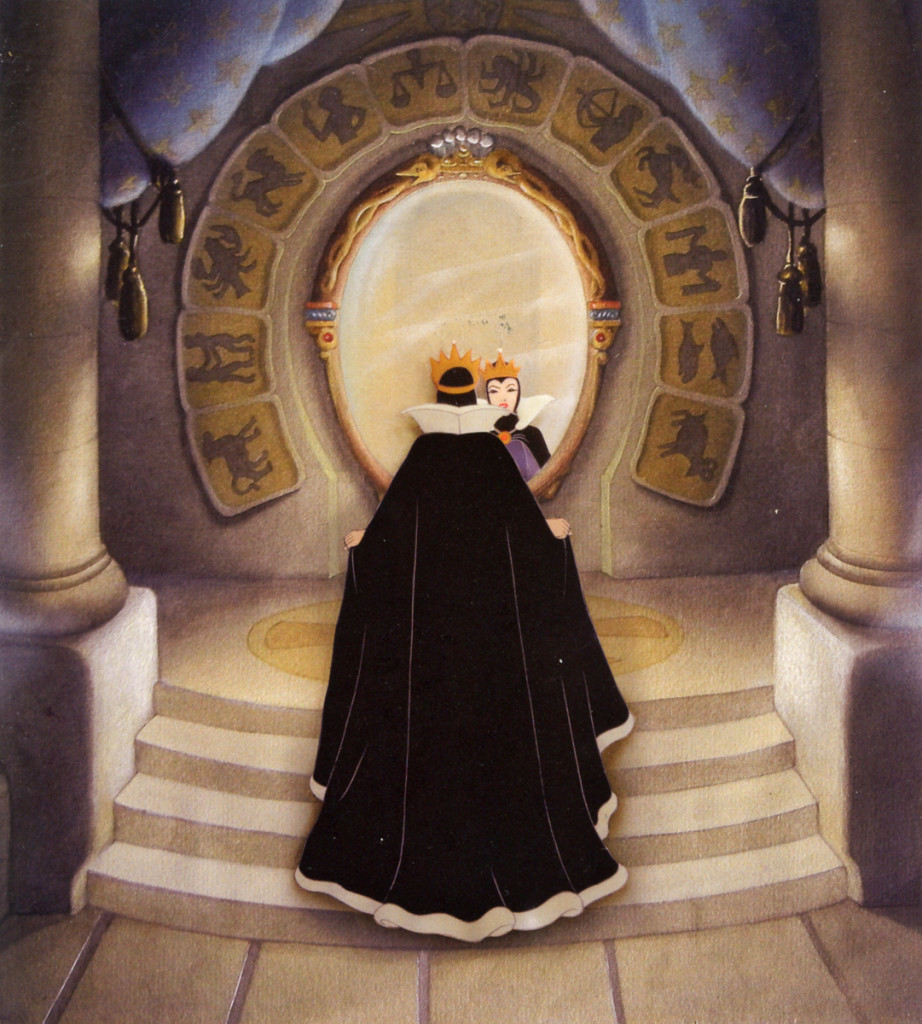 1
1
Articles on Animation &Disney &Music 13 Sep 2011 06:39 am
Bambi’s Music – recap
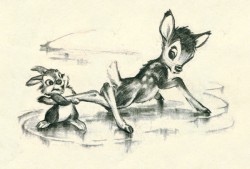 - I first met Ross Care years ago. He had scored the music to one of John Canemaker‘s early short films, The Wizard’s Son. I was impressed, and since I was looking for a composer for the first film of my new company, Byron Blackbear & The Scientific Method, I asked Ross for his help. He did a great job with little time and less money.
- I first met Ross Care years ago. He had scored the music to one of John Canemaker‘s early short films, The Wizard’s Son. I was impressed, and since I was looking for a composer for the first film of my new company, Byron Blackbear & The Scientific Method, I asked Ross for his help. He did a great job with little time and less money.
It was only a short time later, that I learned that Ross was an animation music historian. Somehow, we worked together in setting up a program for ASIFA East in which the conductor for Bambi, Alexander Steinert, took the stage with Ross to analyze the music for that film. I had a 16mm print of the film, and we watched about half of it. It was one of those memorable ASIFA meetings, that stay with you forever.
A year or two later, Ross had written an extensive article on Bambi’s music for The Quarterly Journal of The Library of Congress, the Spring 1983 edition. I just recently ran into the article on my shelves, and after getting Ross’ permission, I’m posting that article here.
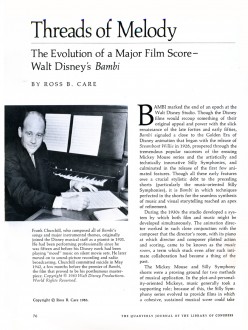 _
_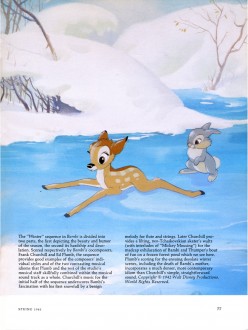 2
2___________(Click any image to enlarge to a readable size.)
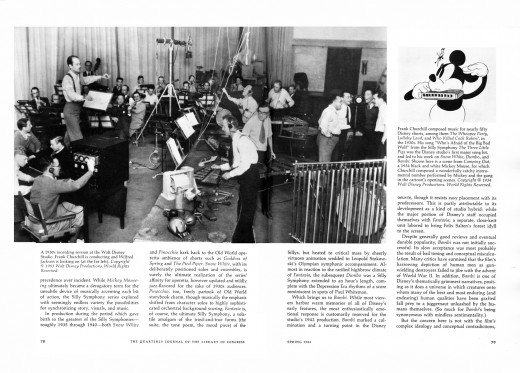 4
_
4
_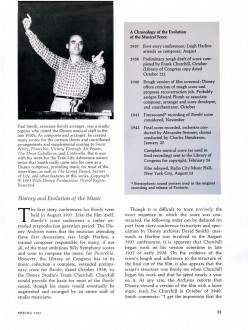 6
6
Article: Copyright © 1983 Ross B. Care
Disney &Music 28 Dec 2010 09:20 am
Bits and Albert Malette
- This is just a quick reminder to say that The Iron Giant is playing at the Film Forum. Today’s the last day it’ll be screened so get out into the snow and head for the theater.
It was Brad Bird’s first feature. He followed this with The Incredibles and Ratatouille. His next feature will be Mission Impossible 3 (or is it 4?) with another cartoon character,
Tom Cruise.
Showtimes: 1:00, 2:50, 4:40, 6:30, 8:20, 10:10
Oddly, My Iron Giant dvd played wonderfully and had all sorts of extras when I bought it.
I just tried the thing on about four computers and three dvd players, and none of them can read it now. The disc is an expensive piece of garbage at the moment. Thank you WB.
- The Illusionist did well in its first weekend, playing in three theaters – two in NY and one in LA. $16,867 per theater for the weekend. This, on a per screen average, is about twice what the best film is doing and nine times better than Yogi Bear. Of course it’d be lower if it were playing in more theaters, but perhaps this will be an incentive for SONY to get it wider than they plan in January.
- I’m going to start running off more of the Action Analysis notes from the after-hours lectures given at the Disney studio in 1936. To start. let me post this lecture about the relation of music and animation given by Albert Malette, who scored these Disney shorts, among other:
1935 Broken Toys
1935 Cock o’ the Walk
1936 Alpine Climbers
1936 Moving Day 1
1937 Lonesome Ghosts
1937 Little Hiawatha
1938 Ferdinand the Bull
1938 Brave Little Tailor
1938 Moth and the Flame
1939 Ugly Duckling
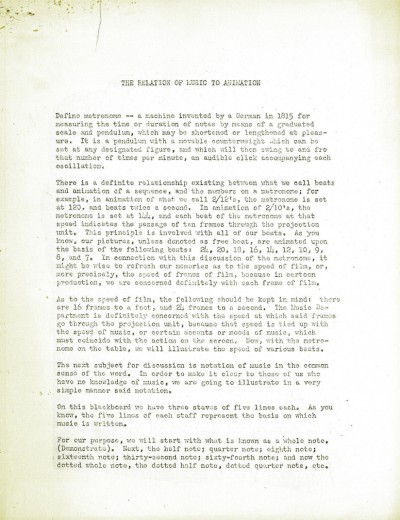 1
1(Click any image to enlarge.)
Music &Photos &SpornFilms 10 Oct 2010 07:59 am
Jazzy Bones
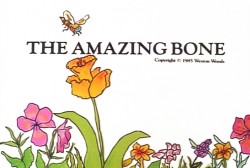 The Amazing Bone was one of the earlier films I did with Weston Woods. It was an attempt to do Doctor DeSoto one better by taking a more famous book by Steig and adding some richer animation and a lot more attention. John Lithgow was hired to read the book. I flew to LA and back in the same day to get to the recording. (I could’ve done it by phone, but where’s the fun in that?)
The Amazing Bone was one of the earlier films I did with Weston Woods. It was an attempt to do Doctor DeSoto one better by taking a more famous book by Steig and adding some richer animation and a lot more attention. John Lithgow was hired to read the book. I flew to LA and back in the same day to get to the recording. (I could’ve done it by phone, but where’s the fun in that?)
We recorded at the old A&M studio. It was originally Charlie Chaplin’s studio and had ultimately come into the hands of Herb Alpert. I
was early; Lithgow was on time. Our recording engineer was named “Magic.” John read the part brilliantly with few needed retakes. 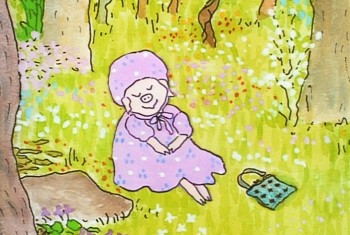 He kept in character for all the voice changes as he read straight ahead. We finished early, and I had a great voice track. I remember exactly the tone of voice when he said goodbye to me, then to “Magic.” He voiced the quotation marks around Magic’s name. I could only smile.
He kept in character for all the voice changes as he read straight ahead. We finished early, and I had a great voice track. I remember exactly the tone of voice when he said goodbye to me, then to “Magic.” He voiced the quotation marks around Magic’s name. I could only smile.
It was a beautiful day, and I had a couple of hours to waste before I had to return my car. So I spent time driving; I love to drive. A lot of touring around Beverly Hills. I remember driving down one quiet street lined with palm trees, and suddenly I realized there was an old clunker of a car tailgating me. I couldn’t imagine what the hell was going on. Then I realized someone was shouting my name. I stopped.
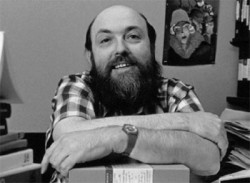 It was Bill Moritz. He came out gave me a big hug; we chatted for a moment, and he went on his way. It was one of those perfect kind of days. I knew Bill because of his association with Elfriede Fishinger. We’d had dinner countless times in NY with John Canemaker and Joe Kennedy.
It was Bill Moritz. He came out gave me a big hug; we chatted for a moment, and he went on his way. It was one of those perfect kind of days. I knew Bill because of his association with Elfriede Fishinger. We’d had dinner countless times in NY with John Canemaker and Joe Kennedy.
After a brief chat, Bill went on his way, and I continued my lovely afternoon heading back to the airport. It was one of those wonderful days.
The voice track was brilliant when finally edited together and the animation began. We decided to record the music early on in the process. I’d agreed verbally to use Steig’s son, Jeremy, to do the score. I had been a fan of his flute music and owned several of his albums.
The score was performed completely by Jeremy Steig and 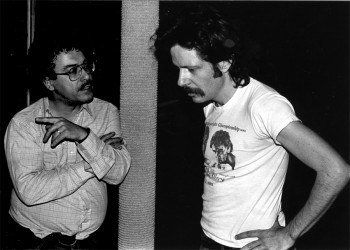 the noted bass player Eddie Gomez.
the noted bass player Eddie Gomez.
As a fan of jazz, it was glorious for me to be working with Eddie Gomez, who had once been a member of the Bill Evans Trio. I lived and breathed through Bill Evans‘ music for a long time, and to have only one degree of separation was something I cherished for the short span of that Amazing Bone recording.
(click on any image to enlarge.)
Above:Eddie Gomez confers with Jeremy Steig about the score they’re composing & performing.
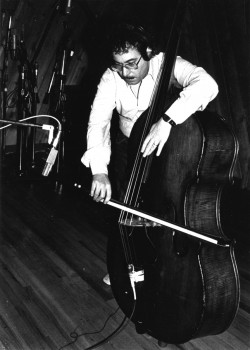
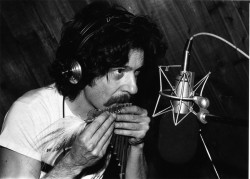 2
2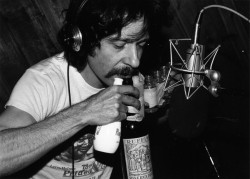 3
3
1. Eddie Gomez plays his bass.
2. Jeremy Steig plays pan pipes.
3. Jeremy Steig plays assorted bottles.
The score took about 7 hours to record and mix.
There were many breaks for Eddie and Jeremy to confer in the bathroom. It got to the point where the engineer/mixer asked them to please stay in the recording session because the breaks were taking longer than the session. They bristled at his comments, and I had to settle things down. However, the more the two went to the bathroom, the slower things got and the music took longer to record. I let things take their own course; the two knew what they had to do.
Regardless, I didn’t care what it took. I was in heaven experiencing the music. The two performers did a great job, and I loved every moment.
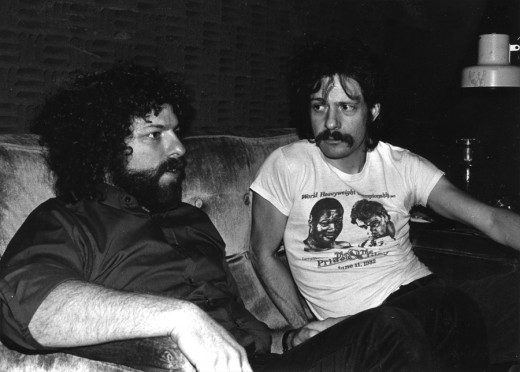
During a break Jeremy and I sat down to discuss the music so far. It was great.
All photos were taken by the producer, Paul Gagne. He’s become a long-time friend. I thought I remembered a photo of him with Jeremy, but I don’t have it.
When I did Abel’s Island, another William Steig book, I asked for Jeremy again. This time it turned into hell with Jeremy’s impossible demands late in the production, his new wife writing me foul-mouthed letters, and my having to fire them (although I did pay them in full) four days before the scheduled mix. I hired the talented Arthur Custer to do a score and he had those four days and half the budget Jeremy was paid. I became a full-fledged producer with that decision, and I’m ecstatic with how it ultimately turned out. Despite threats of legal action from William and Jeremy Steig. That was the last Steig book I was allowed to do.
Daily post &Disney &Music &UPA 31 Jul 2009 07:16 am
Animation Music
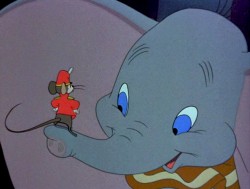 - There’s an extensive review of the music for the Disney animated features, from Dumbo on up through the Fifties. The article was written by Ross Care who is a composer and a film music historian specializing in animation. This was originally written for Cinemascore and can be found on their site – here.
- There’s an extensive review of the music for the Disney animated features, from Dumbo on up through the Fifties. The article was written by Ross Care who is a composer and a film music historian specializing in animation. This was originally written for Cinemascore and can be found on their site – here.
The article gives reports on the music of composers Oliver Wallace, Paul Smith, Ed Plumb and Charles Wolcott. It talks about Dumbo and the post Dumbo features: Victory Through Air Power, Saludos Amigos, and The Three Caballeros. Make Mine Music, Melody Time, Song Of The South, So Dear To My Heart, Fun And Fancy Free, Ichabod And Mr. Toad as well as Cinderella, Peter Pan and Alice in Wonderland.
If you have any interest in the history of film music, particularly applicable to the Disney films, this is worth reading.
- Here’s a review of the film music of UPA written back in the Fifties for Films In Review magazine. I don’t have the exact date of this article I’d saved for the past thirty years.
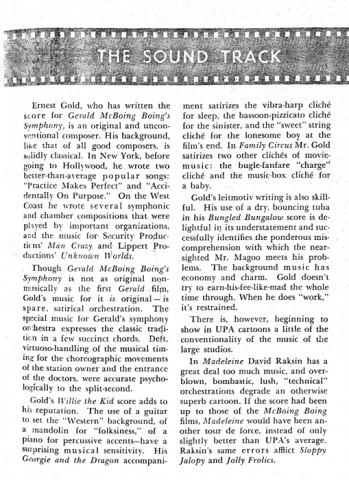 1
1 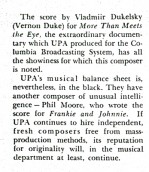 2
2(Click any image to enlarge.)
Daily post &Music 23 May 2008 08:31 am
Notes
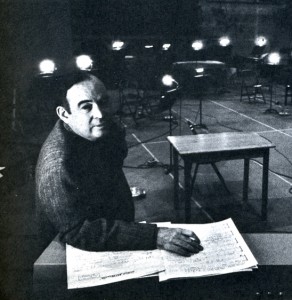 - This week, I enjoyed posting the article by Ross Care on the music of Bambi.
- This week, I enjoyed posting the article by Ross Care on the music of Bambi.
I have been a film music fan almost as long as I have been an animation enthusiast. When I was 12, I bought my first soundtrack, the score to To Kill A Mockingbird, by Elmer Bernstein. What a way to start! This was almosts immediately followed by Lillies of the Field by Jerry Goldsmith. I subsequently bought every score I could find by either of them and stayed a devotee of both. (Animation fans might recognize Goldsmith’s brilliant score for The Secret of Nimh and Mulan or Bernstein’s for The Black Cauldron and Heavy Metal.)
______Ed Plumb in a break between
______recording sessions on Fantasia.___________I have spent quite a bit of interest
__________________________.________________searching down any bits and pieces of information written about film scores and film musicians. I virtually absorbed Roy Pendergast‘s book, Film Music: A Neglected Art, with its interview with Scott Bradley and discussion wiht Gail Kubik (who wrote the score to Gerald McBoing Boing.) I subscribed to Film Score Monthly and Soundtrack Collector’s Newsletter, and I belonged to collector’s groups that would introduce Japanese versions of many scores that included cues that weren’t included in US releases or offered records that weren’t available here. In short, I was obsessed.
That obsession has quieted somewhat, though I still pay close attention to soundtracks and scores. Goldsmith and Bernstein are gone now, but there’s still Tom Newman and James Horner and John Debney (who did the score for my film, Goodnight Moon.)
Ross Care, who wrote the article on Bambi and has written and performed much of his own music – concert as well as filmusic – wrote to tell me that he has a concert upcoming in LA.
Letter to the World – Poets to Song,
Original Songs by Ross Care
June 8, 2008 2pm
First United Methodist Church
1338 E. Santa Clara St.
Downtown Ventura
805-901-2697
Suggested Donation, $15
Featuring the poems of Lewis Carroll, Edward Lear, Christina Rossetti, Frank O’Hara, Emily Dickinson, James Joyce, William Blake and A.E. Housman
Ross Care, Composer/Pianist
Diana Burdick, Soprano
Molly Kohler Pei, Soprano
Steve Perren, Baritone
Philip Vaiman, Violin
Maksim Velichkin, Cello
- Notes on the Music
Care has always been interested in the fusion of music and poetry in a somewhat
neglected form, the modern art song. “Letter To The World†draws from both classic
and modern texts. The settings in this concert are written for voice and piano and
voices with piano, violin, and cello.

- Nina Paley is interviewed in depth on Film & Video‘s site. The subject is how she animated a feature length film, Sita Sings The Blues, in Flash. The film just recently finished playing in the Tribeca Film Festival and will soon show at Annecy.
You can read Variety‘s very positive review here.
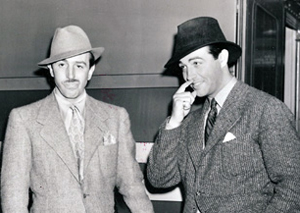 - I enjoy Mike Barrier‘s essays built around “A Day In The Life” of someone or some animation studio.
- I enjoy Mike Barrier‘s essays built around “A Day In The Life” of someone or some animation studio.
These are extraordinary little commentaries on moments in time. His most recent details a trip Walt and Lillian Disney made to New York in 1938 where they met a young Robert Taylor on the train.
Disney: June 20, 1938
These pieces really give you a feel for the time and place of the event. This is something too often left out of animation history and an aspect that I demand of good history (even if I have to supply it myself.)
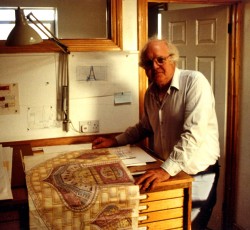
- The fine blog, The Thief, has two excellent pieces on Roy Naisbitt. Roy was one of the keys to the Richard Williams Studio. The two posts feature some of the elaborate and exceptional art Roy did for Dick’s feature, The Cobbler and the Thief. Roy was probably the closest thing Dick had to a computer back in the ’70′s. The post calls him a “certified genius,” and I’d have to agree. For years I knew about Roy’s work; The Thief gives us some of his drawings.
There’s some amazing art here.
Roy Naisbitt pt 1
Roy Naisbitt pt 2
Music &SpornFilms 12 May 2007 08:43 am
Ernest’s Tadpole
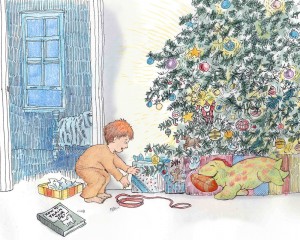 – The Mysterious Tadpole was another of the films I’ve done for Weston Woods which was also scored by Ernest Troost.
– The Mysterious Tadpole was another of the films I’ve done for Weston Woods which was also scored by Ernest Troost.
In 1984 Doctor DeSoto was nominated for the Oscar. For a full year from the date of the announcement I was without work except for one job from Weston.
The Mysterious Tadpole had a budget which totaled about $15000. That was it for the year. So much for the glory. The budget was such that I had to do the entire film with help from only Bridget Thorne, who helped render the artwork and prepare it all for camera.
As a result, I got particularly close to this film. When it came time for the music, I had formed a lot of specific ideas. I’d thought about it a bit too much. This made the job for Ernest particularly difficult; I was going to be hard to please.
When the music arrived it sounded completely different from what I’d expected. This was in the days before synthesized music, so the only way I’d heard it played was on a piano. It was a complete surprise to hear those final tapes. The orchestration was not what I’d heard in my head, and I’m afraid my disappointment was obvious.
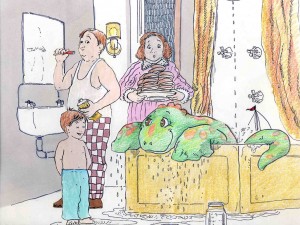 After spending a bit of time placing the music into the film with Paul Gagne, who was co-producing the film and editing it, I started to warm to the score. By the time I’d heard it in place and watched the film with its score two or three more times, I’d fallen in love with what Ernest had done. My ideas were so simple, and he had done something complex.
After spending a bit of time placing the music into the film with Paul Gagne, who was co-producing the film and editing it, I started to warm to the score. By the time I’d heard it in place and watched the film with its score two or three more times, I’d fallen in love with what Ernest had done. My ideas were so simple, and he had done something complex.
That was a lesson to learn. When you’re working with someone whose talent you respect, trust that person. So often when hearing music for my films or when hearing an actor reading the script, I’ve had a surprise jolt getting something completely unanticipated. I have to say 90% of the time I’ve immediately recognized it’s positive. That other 10% of the time it’s often just an attitude adjustment I’ve had to make.
That’s not to say that there aren’t those times when I know it doesn’t work as well as it might have, but that doesn’t happen too often if I’m working with people whose talent I respect.
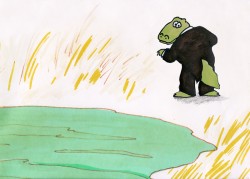 – Continuing to look at a couple of Sesame Street spots Ernest Troost scored for me, my favorite, by far, is Crocodile Smiles. This was done in 1981. Edith Zornow was the producer of animation at Sesame Street, and I saw her as my guardian angel. (I’ve said that before.) She always seemed to show up just when things seemed bleakest. The first three spots I did for her included this film and it really sold me on Ernest’s work.
– Continuing to look at a couple of Sesame Street spots Ernest Troost scored for me, my favorite, by far, is Crocodile Smiles. This was done in 1981. Edith Zornow was the producer of animation at Sesame Street, and I saw her as my guardian angel. (I’ve said that before.) She always seemed to show up just when things seemed bleakest. The first three spots I did for her included this film and it really sold me on Ernest’s work.
I wanted opera, and he gave me more – cartoon opera. It really feels like this group would be playing in some 30′s cartoon. Again, the budgets for Sesame Street was always low. These two films had about $5000 total for everything from script/board to completion.
This film is available on YouTube, but I don’t like the resolution of that copy, so I’ve put it up here as a QT movie.
The Stranger was done a couple of years later. This is from one of the last films we did for Edith Zornow. She died soon after of Parkinson’s Disease. Since my father was also suffering from the disease at the same time, I was comfortable with it, though she seemed obviously uncomfortable. It didn’t stop her from going on right to the end.
Animation &Music &SpornFilms 08 May 2007 07:32 am
Ernest Does DeSoto
- I think music is as important to animation as any of the drawing. (Even the lack of music, to me, is a musical choice in film.)
I’ve been very lucky to have worked with some incredibly fine composers in the films I’ve done. To that end I’ve come back to work again and again with the same few composers.
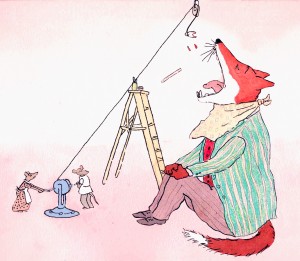 The first of those who seemed indispensible to the films we did together was Ernest Troost. We met way back on my first short film for Weston Woods. Ernest was on staff there, and we quickly became good friends.
The first of those who seemed indispensible to the films we did together was Ernest Troost. We met way back on my first short film for Weston Woods. Ernest was on staff there, and we quickly became good friends.
That first score he did for me was the delicate Rosemary Wells Morris’ Disappearing Bag. This quiet little film was successful, but it wasn’t until our second collaboration that things took off – Doctor DeSoto.
Doctor DeSoto was an Oscar nominee in 1984, and I think it was as much for the music as it was the William Steig story, or Ian Thompson’s droll reading, or any of our artwork. The film was a hit and won a lot of awards and, to this day, still gets a lot of exposure.
As we were about to go into this film, Ernest had to write a score for an slide version of the book which Weston Woods was going to distribute. I suggested he listen to Stephen Sondheim‘s score for the film, Stavisky. It was built around an infectious waltz and had a peculiar arrangement.
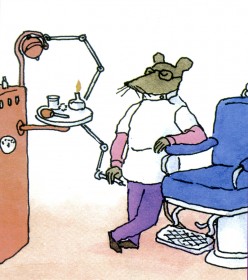 Ernest came up with something that took me by surprise. It was built off Stavisky but was so totally original in its sound that I had the first little shock that I’ve always gotten when music I didn’t expect but was excited and challenged with comes into my hands. This moment is always a great surprise and one of the pure delights, for me, of filmmaking. The only other experience it resembles is when an actor gives you a line reading that is totally unexpected, one you never would hear in your own head when reading the line. This is usually the best possible reading because it indicates pure character.
Ernest came up with something that took me by surprise. It was built off Stavisky but was so totally original in its sound that I had the first little shock that I’ve always gotten when music I didn’t expect but was excited and challenged with comes into my hands. This moment is always a great surprise and one of the pure delights, for me, of filmmaking. The only other experience it resembles is when an actor gives you a line reading that is totally unexpected, one you never would hear in your own head when reading the line. This is usually the best possible reading because it indicates pure character.
Ernest’s orchestral arrangements for this music reminded me of some small cartoon cabaret in Vienna in the early 1920′s. It worked perfectly for the cartoon Brooklyn in my mind for the film’s setting.
This is the pure character of a good composer scoring your piece.
Having the luxury of this original score prior ot the animation isn’t always a luxury an Independent filmmaker is given. It costs too much. But Weston had their score for the slide film, and I saw that this was going to be a great score for my animation. I worked with that waltz tempo.
When the fox was off screen, the camera moved in time with the waltz tempo and the limited animation also hit those beats. When the villain was onscreen, there was little to no camera movement cutting the picture to the tempos. Paul Gagne, editing, certainly helped out here.
The music not only was allowed to dominate the overall film, it was enhanced by this decision.
To hear the opening theme to Dr. DeSoto click here.
Ernest Troost also wrote about a dozen Sesame Street spots for me. Many of them were songs which he wrote with Maxine Fisher who did the lyrics. Two of these spots are featured on YouTube. I like the Crocodile Smiles spot which played at Annecy and is in the MOMA collection. Pirate Plan is a good song but my graphics don’t quite work.
Here’s another spot that is built around the music. For the very low budget, it was a big track for us, but Ernest pulled it off brilliantly. Obviously, he was parodying the John Williams’ scores for Indiana Jones.
